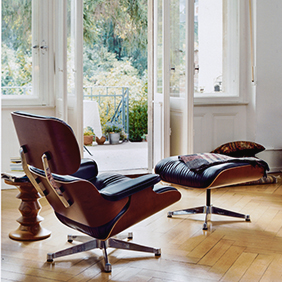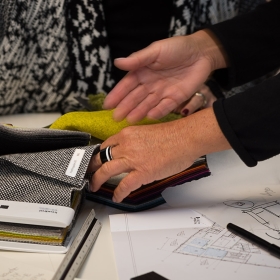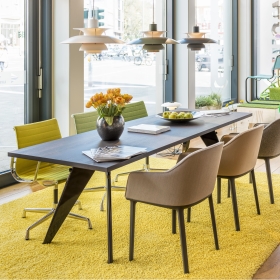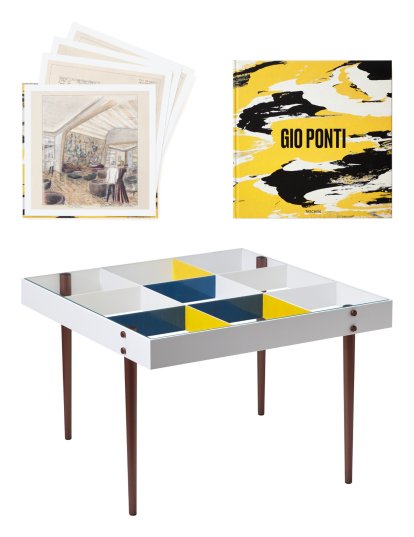Gio Ponti
Gio Ponti
One of the few Italian architects who has achieved international success with both small, everyday objects and large building projects is Gio Ponti. Born in 1891 Ponti established his own architectural firm in 1927, and founded the group Labirinto in the same year, a group which dedicated itself to the production of high quality furniture. In addition, Ponti was the artistic director of the porcelain manufacturer Richard Ginorius from 1933 on and in 1928 founded the magazine Domus for art and architecture, which he led, with interruptions, until his death in 1979. Consequently Gio Ponti made a versatile and important contribution, also in terms of teaching, to the renewal of Italian furniture production and industry. Among his most famous works next to the Pirelli skyscraper - one of Milan's landmarks - is the 1957 released and acclaimed Superleggera chair, which produced was re-released in 2017 as the 646 Leggera by Cassina.
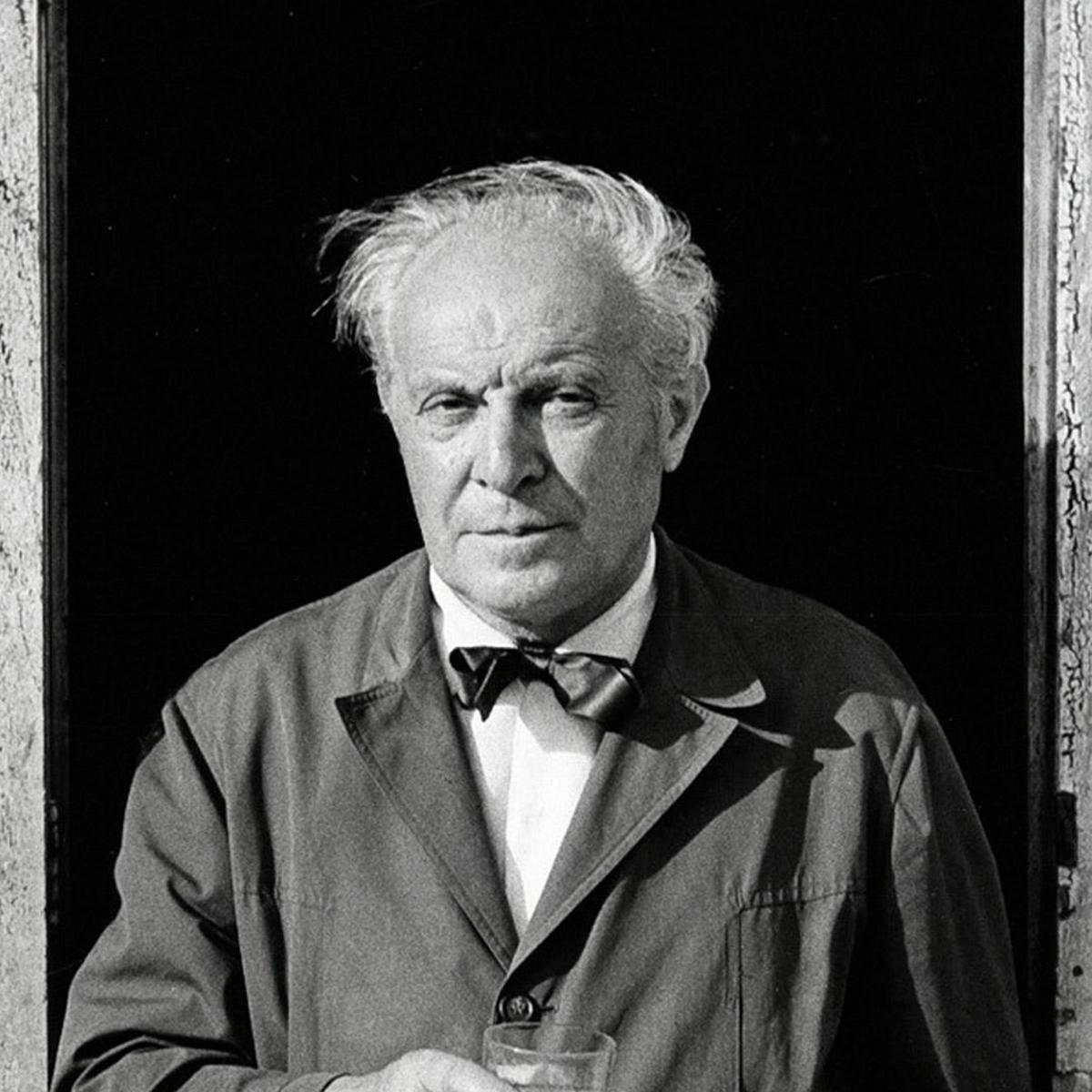
Designer and Architect Gio Ponti
smow Design talk to Salvatore Licitra
Architect, designer, artist, publisher, professor, visionary ... Gio Ponti was one thing above all: versatile. A versatility confirmed, and celebrated, by the TASCHEN Verlag monograph Gio Ponti.
Realised in conjunction with Salvatore Licitra, Gio Ponti's grandson and founder of the Gio Ponti Archives, Gio Ponti unites a detailed Ponti biography by author, designer and Ponti expert Stefano Casciani with an extensive, and fulsomely illustrated, catalogue raisonné to allow for a unique insight into Gio Ponti and his oeuvre: and for all who wish to experience Ponti as well as read about him, the strictly limited Art Edition comes with four high-quality Ponti prints and the lattice structured Arlecchino coffee table designed by Ponti in the early 1950s, and never before publicly available. And which makes the TASCHEN Verlag Gio Ponti Art Edition a coffee table book that comes with its own coffee table.
To find out a little more about Gio Ponti smow spoke with Salvatore Licitra, and started by asking about the cooperation with TASCHEN Verlag and the path to the monograph.
Salvatore Licitra: The idea of the best possible book on Ponti was born in 2007. The idea was to make two books, one small and slender, limited to architecture and a second that was to be the real definitive book on Ponti. The first was immediately made and distributed all over the world, translated into several languages. While the second, as happens with the operas you love, and this arose from Benedikt Taschen's interest in Ponti's work, had a long career and study. Only now we see it finished and we are all proud and happy about it.
smow: "Definitive book on Ponti" is a good description of the work, illuminating as it does the many and varied facets of Gio Ponti's oeuvre. But amid all that variety, what for you is the essence of Gio Ponti's work?
Salvatore Licitra: The magic of Ponti's work, the focal point that holds all his multifaceted work together and projects it into the future, while maintaining attention, knowledge and curiosity to the past, is the gaze. Ponti around the gaze builds the work, and the gaze can only be contemporary. The fortune and success of his work today is determined by the fact that we now live in a totally visual era and Ponti's work, his forays into the classic, his curiosity for the arts give shape to an attitude that is absolutely today contemporary.
smow: The Pirelli Tower in Milan is, inarguably, Ponti's best known architectural work, and thus features prominently in the monograph; as does the much lesser-known Villa Planchart in Caracas, Venezuela. How important, relevant, is Villa Planchart in and to the Ponti oeuvre, how can Villa Planchart help explain aspects of Ponti's approaches?
Salvatore Licitra: In Ponti's publication of Villa Planchart in Domus he begins with the title "a Florentine villa", but the Pontian fun for this debut lies precisely in the spatial and temporal gap. The Villa takes up and transforms the classical canons, but it is also the precious opportunity for Ponti to make and invent everything he considered necessary for the work. Not only ideas travelled from the old to the new continent, but also the marbles, furnishings, ceramics, works of the friend artists. By studying the Villa, we find a repertoire of materials, colours, proportions, the application of a review of design procedures, criteria, juxtapositions that are truly all the colours of Ponti's palette, and which emerge in previous works as well as in subsequent ones.
smow: Much as the Pirelli Tower is Gio Ponti's most famous architectural projects so is the Superleggera his most famous furniture object, but did Ponti himself have a personal favourite amongst his many, many architecture and furniture projects?
Salvatore Licitra: Ponti in the 70s, when he was an elderly man, said "I am well known for the Pirelli Tower and the Superleggera chair, but it must be testified that there are two other works of mine that are equally important: the Taranto Cathedral and the "chair with little seat". Both works from the 1970’s, where space, emptiness, have an architectural role. Instead of a traditional dome, the cathedral has a perforated sail where emptiness is as good as fullness, and the chair, in the subtlety of the structure that supports the surfaces of seat and backrest makes it look like a drawing you can sit on.
smow: In 1996 you established the Gio Ponti Archives, why, what was the motivation?
Salvatore Licitra: My idea from the beginning has always been to combine testimonies and materials not only from the Ponti’s studio, but also from the companies that have worked with him, from the artists who have come into contact with his work, from the artisans who have lent to perform works for him. The goal is to compose a large fresco, a sixty-year-old landscape of Italian art where Ponti was an exceptional protagonist.
smow: Amongst the archives' possessions are some 100,000 letters to and from Ponti, which help underscore just how widely connected he was, and one name that crops up quite a lot in the book is Le Corbusier, and that despite the apparent differences in their work. What was Ponti's relationship to Le Corbusier, was he an admirer of Le Corbusier?
Salvatore Licitra: Ponti considered and appreciated Le Corbusier very much, invited him to lectures and there are frequent references to him, called by Ponti “Maestro”. However, he enjoyed telling an anecdote where Le Corbusier, questioned by a student about the fact that a work did not obey the criterion of the “Modulor”, replied: But I don't care about the modulor.” In short, between rigor and coherence and the brilliant and intuitive vision Ponti preferred the latter.
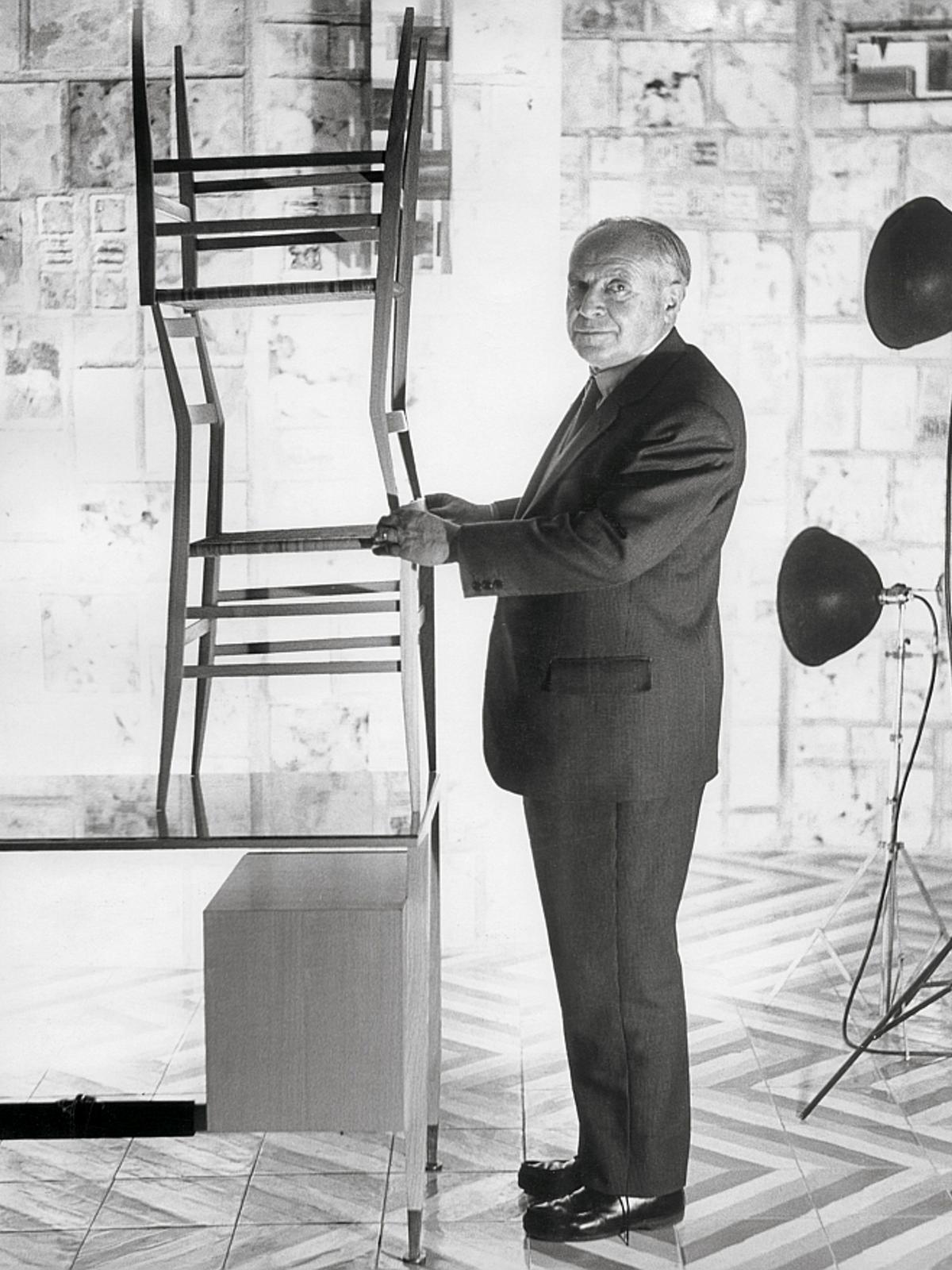
The Leggera chair is based on designs by Gio Ponti from 1952. Cassina took up the chair again in 2017 and is now producing this masterpiece of carpentry
smow: One of the joys of the book is the number of relatively unknown projects one discovers, new discoveries, if one will, which inspire to further research. Are there any lesser known Ponti projects that for you are particularly worthy of becoming better acquainted with?
Salvatore Licitra: There are unrealized works but with very interesting projects, or works that for different reasons not related to their value have not been considered sufficiently. I can give the example of Ponti's work in Padua with the Liviano and Palazzo Bo, or the Villa Arata in Naples.
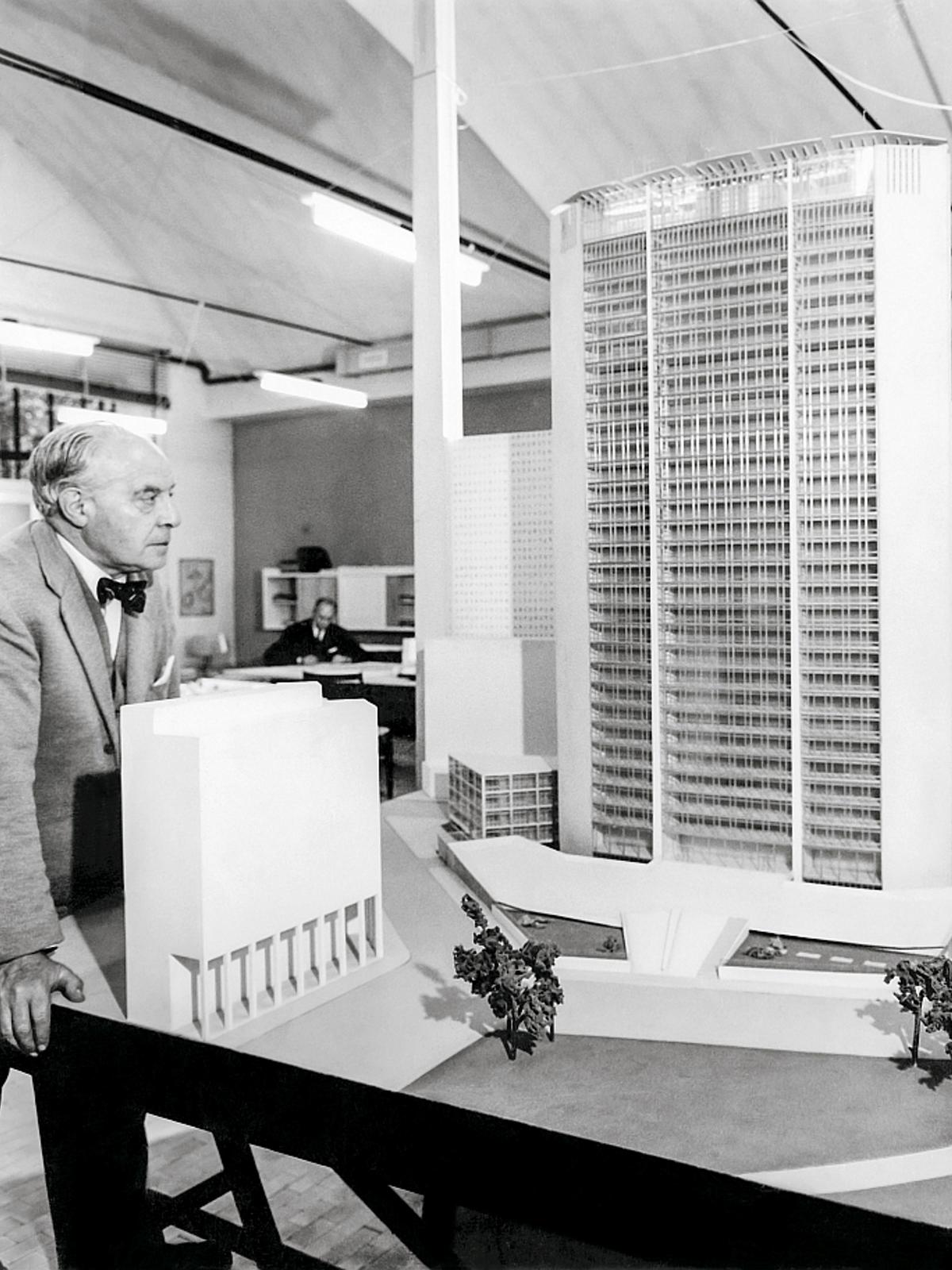
Gio Ponti and his Pirelli Tower
smow: Moving away from Gio Ponti architect/designer/author and on to Gio Ponti uomo, in photos he always looks like a very affable, sociable if thoughtful, contemplative individual: How did you experience your grandfather as a person, how would you describe him as a person?
Salvatore Licitra: Ponti was an innate communicator… he was a seducer. He seduced the clients, but also the grandchildren, joking with them. In the grandparent’s home there was no separate administration between adults and children that they could even disturb.
smow: And by way of a final question, if we were compiling a dictionary, could you supply a brief definition of "Pontian", can one define "Pontian"?
Salvatore Licitra: Certainly, I am in favour of the establishment of this adjective because it urges us to identify a style ... and Ponti has always and above all been a master of style.
smow: One of the joys of the book is the number of relatively unknown projects one discovers, new discoveries, if one will, which inspire to further research. Are there any lesser known Ponti projects that for you are particularly worthy of becoming better acquainted with?
Salvatore Licitra: There are unrealized works but with very interesting projects, or works that for different reasons not related to their value have not been considered sufficiently. I can give the example of Ponti's work in Padua with the Liviano and Palazzo Bo, or the Villa Arata in Naples.


